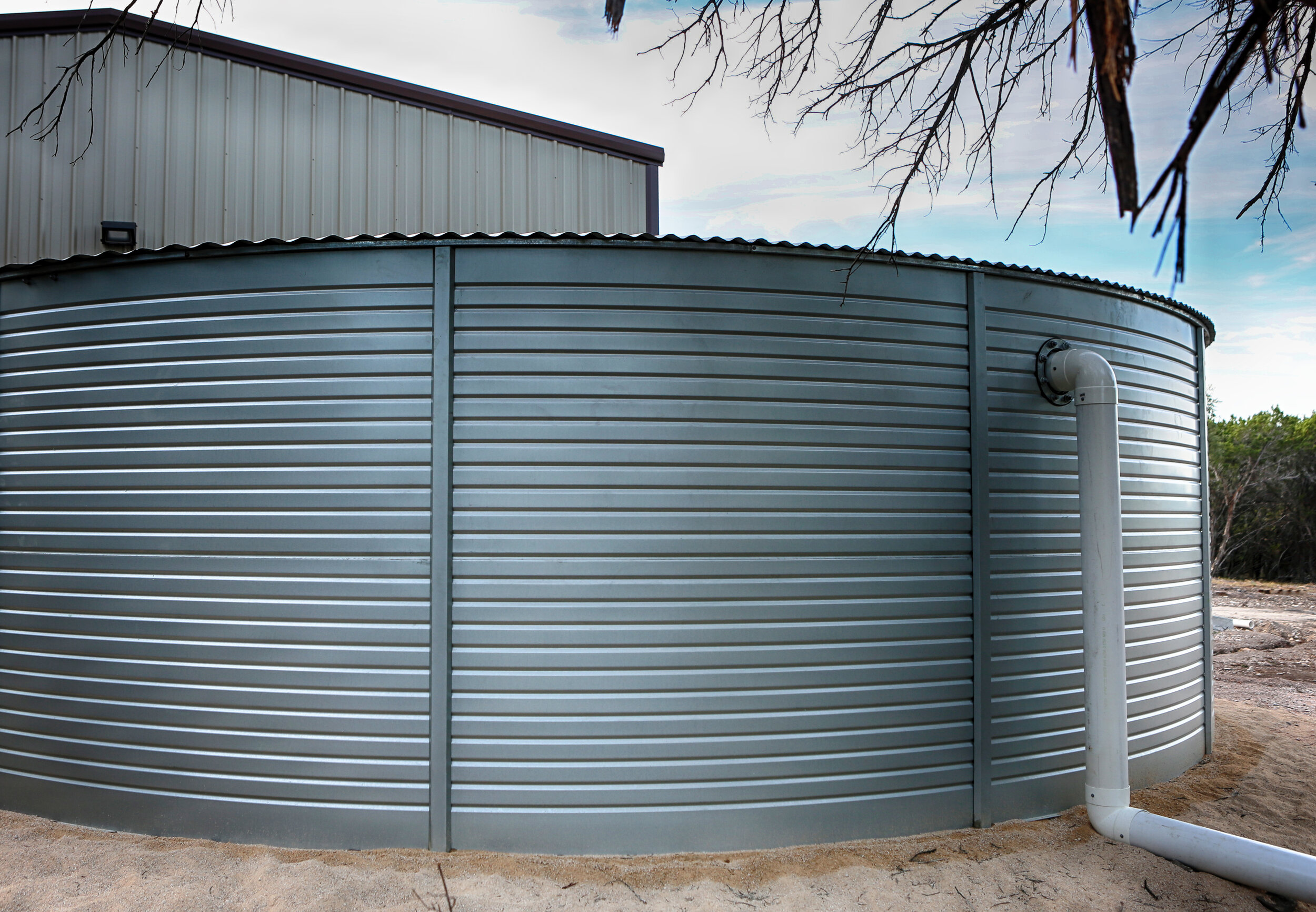The permit process for potable rainwater catchment systems
The Gulf Islands are in an excellent position for rainwater catchment. Though it fluctuates year-by-year and is slightly different from island to island, we can count on receiving nearly 800-1000mm of precipitation a year. This is enough rainfall that most households can catch enough water for their yearly needs. This can relieve a bad quality or poor pumping well. Or, it can open the door for building a house on a site where previously that wasn’t an option, due to a lack of groundwater for a well.
A brief history
It is a recent development that homeowners can legally install rainwater systems for potable use. That’s not to say that people haven’t been doing it for a long time. Since ancient times, and more relevant to this post, since we’ve had building codes, people have MacGyver’d together their own systems to supplement their water supply. This has put them in a grey area. The building codes didn’t have specific language on the approved design and install of a safe system. And the permitting authorities weren’t in a position to make up their own.
What has resulted is that some homeowners have taken it upon themselves to design and install a system and don’t have safe water running through their pipes. This becomes a liability for two reasons. One, the health authority could come knocking if a visitor, renter, or guest were to ever get sick. Two, if these homeowners were to ever try and sell their house, it could become a sticking factor and likely a condition on the sale that the house has an approved drinking water system.
So what changed to allow for potable rainwater systems?
Two things changed. One at the building code level and another at the permitting authority level, at least in the case of residents living in the Gulf Islands. The 2015 National Building Code of Canada, by way of the BC Building Code 2018, began including language around auxiliary water supplies and the use of rainwater collection. Further, at least in our permitting jurisdiction (which is the CRD), the building regulation bylaw (No. 3741) was amended. Bylaw No. 3780 was placed into force in 2011. It essentially provided a mechanism to allow for potable rainwater systems by leaving the approval and certification of such systems up to a qualified engineer.
As such, your rainwater designer needs to submit a permit application, complete with a site plan, design drawings, and other standard items that we’ve talked about previously. It’s worth noting that a schedule ‘B’ will be required as part of the submission. Barring any surprises, you should get your permit about 4-weeks after the submission date. And after installation, commissioning, and water testing is complete, your engineer should provide you with an operations and maintenance plan and as-built drawings along with certification of the potable water system. These documents will need to be attached to a schedule ‘C’ and submitted to the permitting authority to close out the permit.
That’s it, right?
Not quite. It is important to note that there remain some grey areas.
Potable rainwater systems have been allowable only in the cases of domestic water systems that serve only one single-family residence. This is because these types of systems do not fall with the regulations of the Drinking Water Protection act, like “water supply systems” do — a topic that we will go into more depth on in a future post. So if you supply potable water to more than just your family, things are going to get more complicated and will likely involve the health authority in the approval process. It is important to note that, as of yet, the BC Health Authorities do not yet have an authoritative design guideline for small water systems. Though they have provided some early guidance on the issue in this document.
Your engineer will also likely put conditions on your certification. Namely: that proper cleaning and maintenance are performed and logged, that water testing is scheduled and logged, and that the system is not modified in any way without the engineer’s approval.
Anything else?
As a final note — non-potable systems for irrigation are normally fully excluded from permitting and can be completed without an engineer. However, if you are going to use non-potable water for toilets and other non-potable services, you are back into the permit process. Though this can be done without an engineer and with your local plumber in most cases, as long as it falls within the building code.

